High-altitude regions around the world are home to some of the most unique and uncommon mammals on the planet. They have adapted to survive in the harsh, cold, and rugged environments of the world’s tallest mountains. From the Himalayas to the Andes, these creatures thrive in places where few others can live, each with its own fascinating adaptations. In this article, we’ll explore a variety of mammals that have evolved to call these extreme heights home, showcasing the incredible ways nature has equipped them to survive.
Snow Leopard
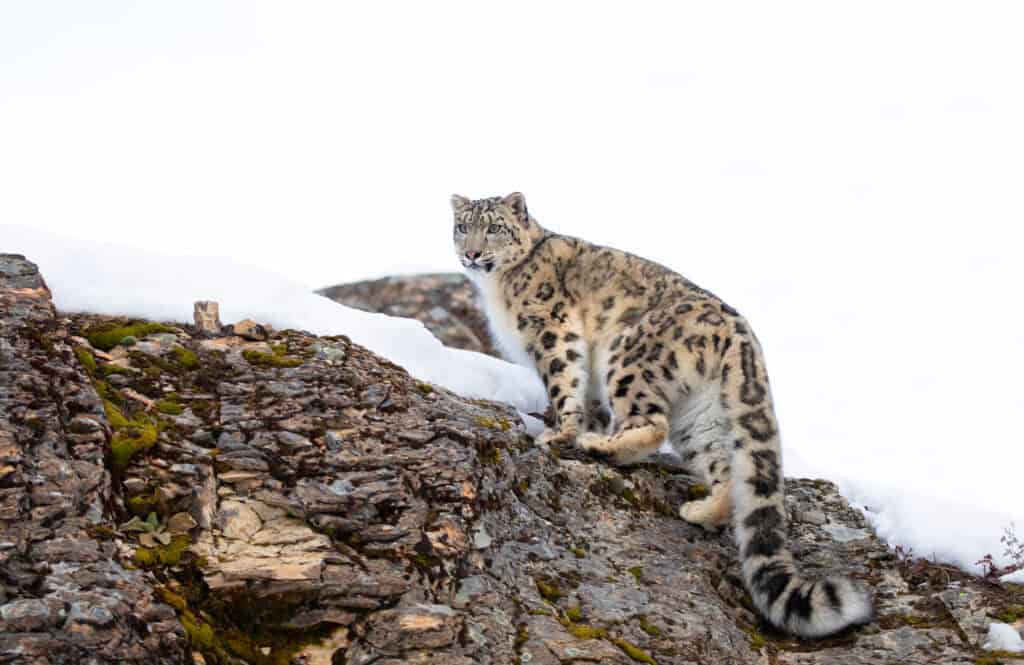
The snow leopard is an elusive feline native to the mountainous regions of Central and South Asia, particularly the Himalayas. Their thick fur coat and wide, fur-covered paws are adaptations to cold climates, helping them traverse the rugged, snowy terrain. These cats thrive at altitudes between 3,000 and 5,500 meters, where few other predators can compete. With powerful hind legs, they can leap up to six times the length of their body, making them skilled hunters in rocky landscapes. Snow leopards primarily hunt wild sheep and goats, such as the Himalayan blue sheep, which are well-suited to steep, high-altitude environments. Despite being at the top of the food chain, snow leopards are highly endangered due to poaching and habitat loss. They are also known to have a low reproductive rate, which makes conservation efforts more difficult. Recent technological advances, like camera traps and GPS tracking, have significantly helped researchers understand their elusive nature. Snow leopards also exhibit a unique behavioral adaptation: they are crepuscular, meaning they are most active at dawn and dusk.
Himalayan Tahr
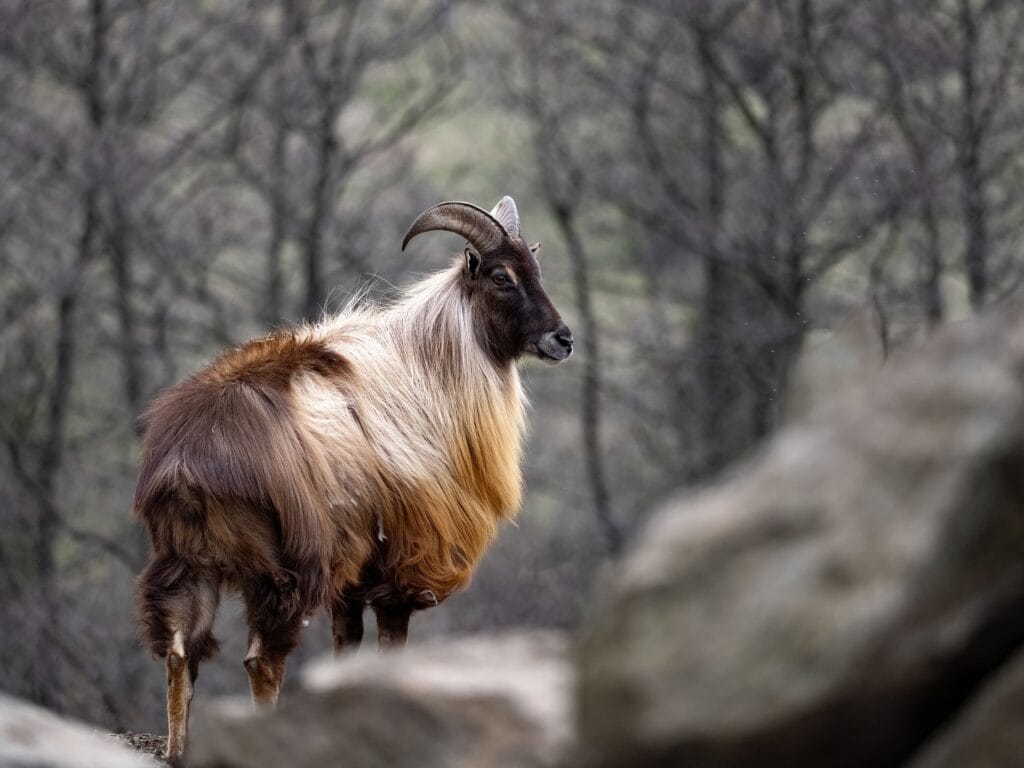
The Himalayan tahr is a goat-like herbivore found in the rugged, steep cliffs of the Himalayas. It has a thick, reddish-brown coat that insulates it from the extreme cold at high altitudes, typically between 2,500 and 5,000 meters. Their short, sturdy legs and specialized hooves make them excellent climbers, able to traverse the steep, rocky terrains that few animals can access. They are social creatures and are often seen in herds, but their numbers have declined due to hunting and habitat loss. They primarily feed on grasses and shrubs, adapting to the sparse vegetation available in mountainous areas. Despite being preyed upon by snow leopards, their agility and the difficult terrain give them a significant advantage in escaping predators. In winter, they descend to lower altitudes in search of food, but in summer, they return to higher elevations, showing remarkable adaptability to their environment. Interestingly, Himalayan tahr populations have been introduced in other countries like New Zealand, where they have thrived in similarly rugged conditions.
Tibetan Antelope
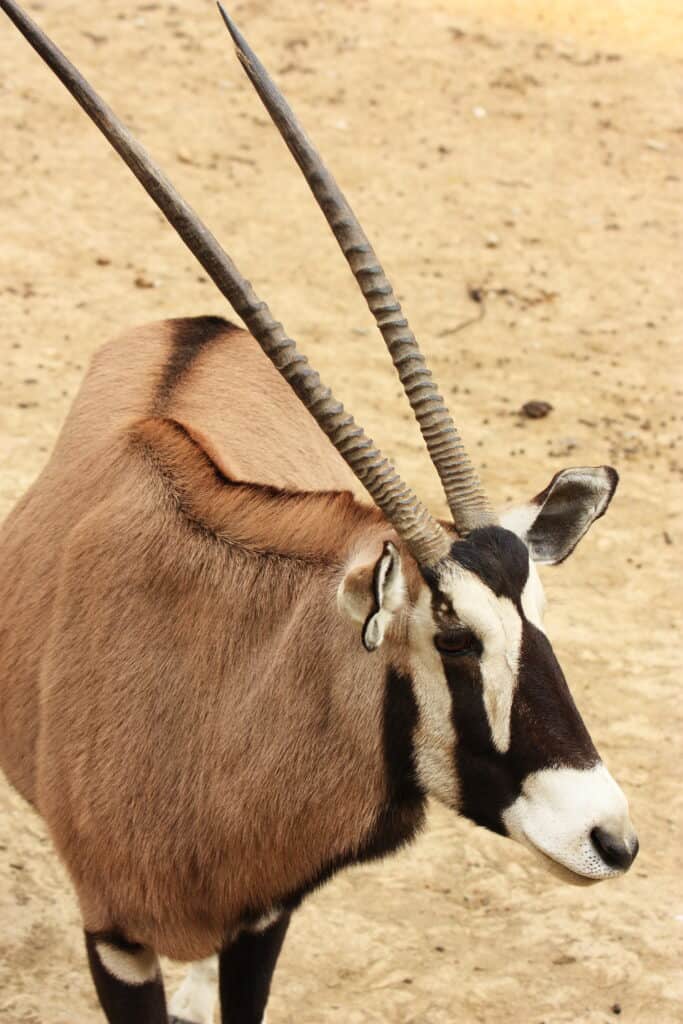
The Tibetan antelope, or chiru, is a rare species found in the high-altitude plateaus of the Tibetan region, particularly in the Himalayas. These antelopes inhabit altitudes as high as 5,500 meters, making them one of the highest-dwelling mammals in the world. Their thick, wooly coats provide excellent insulation against the freezing temperatures and biting winds of their environment. They are uniquely adapted to the thin air at such high altitudes, having evolved larger lungs and a higher concentration of red blood cells to facilitate oxygen absorption. This species has faced significant population declines due to poaching, especially for their underfur, known as shahtoosh, which is highly prized in illegal markets. Despite legal protections, their numbers remain critically low, and conservation efforts are ongoing. Tibetan antelopes are migratory, traveling long distances during the winter months to find food and return to higher altitudes in the summer. Another intriguing fact is that only the males grow horns, which they use during mating season to compete for females.
Bharal (Blue Sheep)
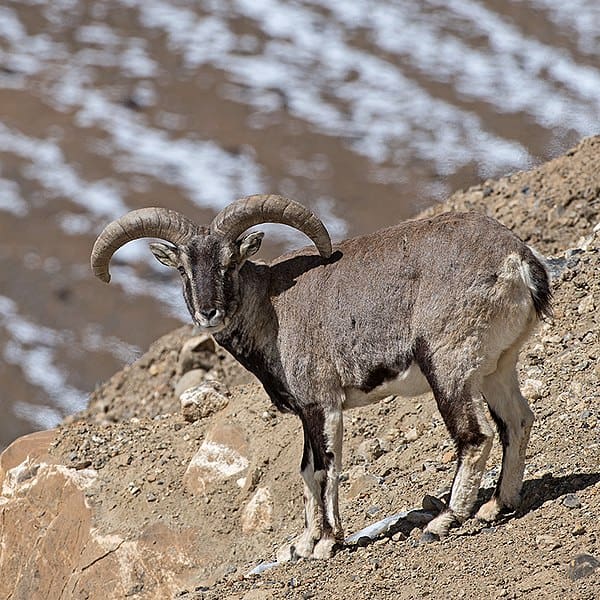
The bharal, or blue sheep, is native to the high-altitude regions of the Himalayas and Tibetan Plateau. They are called “blue sheep” due to the bluish-gray tint of their coat, which provides excellent camouflage against the rocky, barren landscape of the mountains. They typically inhabit elevations between 3,000 and 5,500 meters, where they graze on the sparse grasses and shrubs that grow in these harsh conditions. Their stocky build and powerful legs allow them to navigate steep cliffs with ease, often escaping predators like snow leopards by climbing to higher, more inaccessible areas. Bharal live in herds, and males are known for their impressive, spiraling horns, which are used in dominance displays and battles during the mating season. Though not currently endangered, they face threats from habitat loss and competition with livestock for grazing grounds. Unlike many other mountain-dwelling mammals, they remain at high altitudes year-round, enduring freezing winters and low oxygen levels. They are also culturally significant in some regions, where they are considered sacred animals.
Himalayan Brown Bear
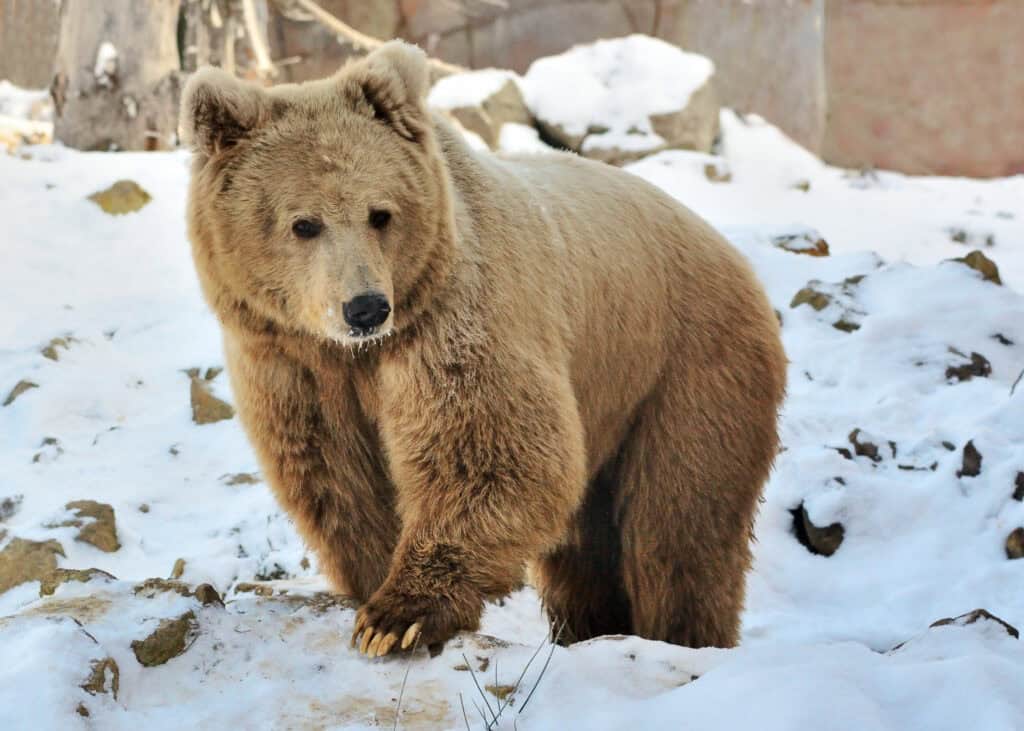
The Himalayan brown bear is one of the most powerful predators found in the high-altitude regions of the Himalayas. These bears inhabit elevations ranging from 3,000 to 5,000 meters, often in remote and inaccessible areas. Their thick fur and large size help them survive in the cold, harsh conditions of the mountains. Unlike many of their relatives, they are omnivorous, feeding on everything from grasses and roots to small mammals and carrion. They hibernate during the winter months in caves or dens, emerging in the spring when food becomes more abundant. Unfortunately, the species is considered critically endangered, with small, fragmented populations spread across their range. Poaching and habitat loss are major threats to their survival, as they are hunted for their fur and body parts. Interestingly, they are believed to be the inspiration for the mythical Yeti, the “Abominable Snowman” of Himalayan folklore. The bears have also been known to display highly territorial behavior, aggressively defending their range from other animals and humans.
Markhor
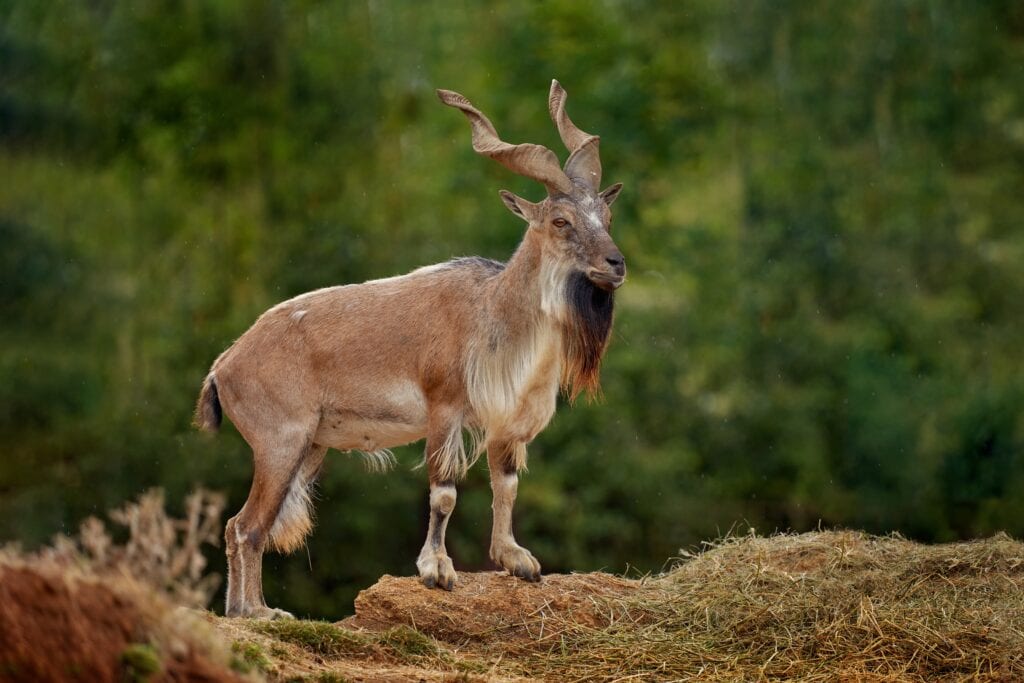
The markhor is an extraordinary species of wild goat found in the rugged mountainous regions of Pakistan, Afghanistan, and northern India. They are most commonly associated with the Hindu Kush and Karakoram mountain ranges, where they live at altitudes of up to 4,000 meters. They are known for their striking, spiral-shaped horns, which can grow up to 160 cm in males. Their thick, shaggy coats keep them warm in the cold, high-altitude environment, and their nimble legs allow them to navigate steep cliffs with ease. Markhors are herbivores, feeding on grasses, leaves, and shrubs, and their ability to digest tough, fibrous plants makes them well-suited to the sparse vegetation of the mountains. This species is also endangered, primarily due to overhunting and habitat destruction. The markhor is also the national animal of Pakistan and plays a significant role in local folklore and cultural identity.
Andean Mountain Cat
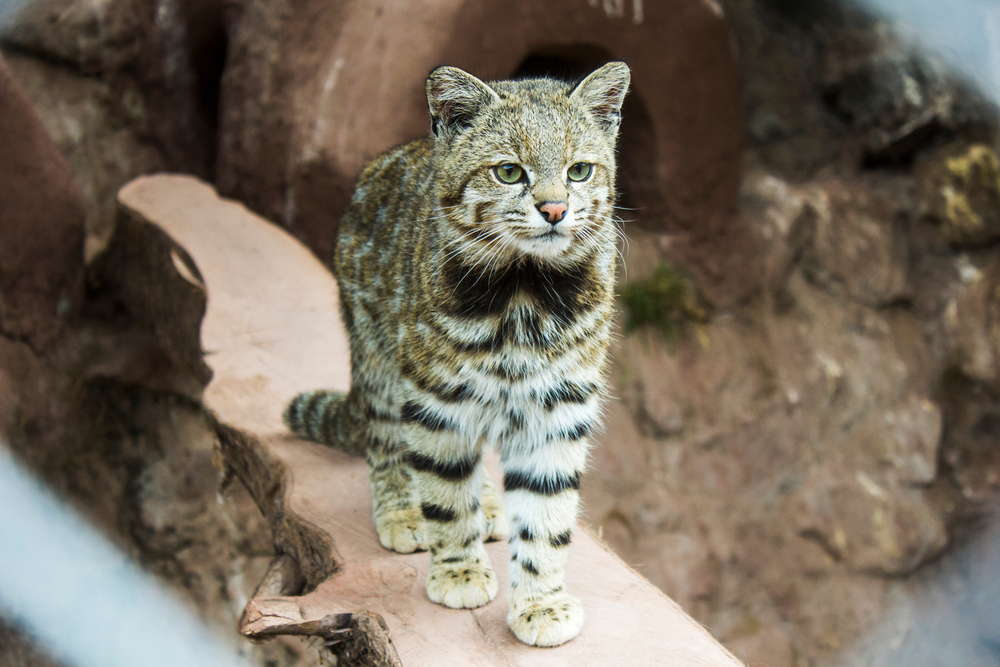
The Andean mountain cat is one of the rarest and least-known wild cats in the world, residing in the high-altitude regions of the Andes Mountains in South America. These elusive felines inhabit elevations ranging from 3,000 to 5,000 meters, where the air is thin, and the temperature can drop well below freezing. Their thick, silvery-gray fur and bushy tail provide insulation against the cold, and their small, compact bodies are well-adapted to the harsh environment. These cats primarily feed on small mammals like viscachas, which are abundant in the rocky landscapes they inhabit. Due to their elusive nature and remote habitats, very little is known about their population size or behavior. However, they are considered endangered, with fewer than 2,500 individuals believed to remain in the wild.
Pallas’s Cat
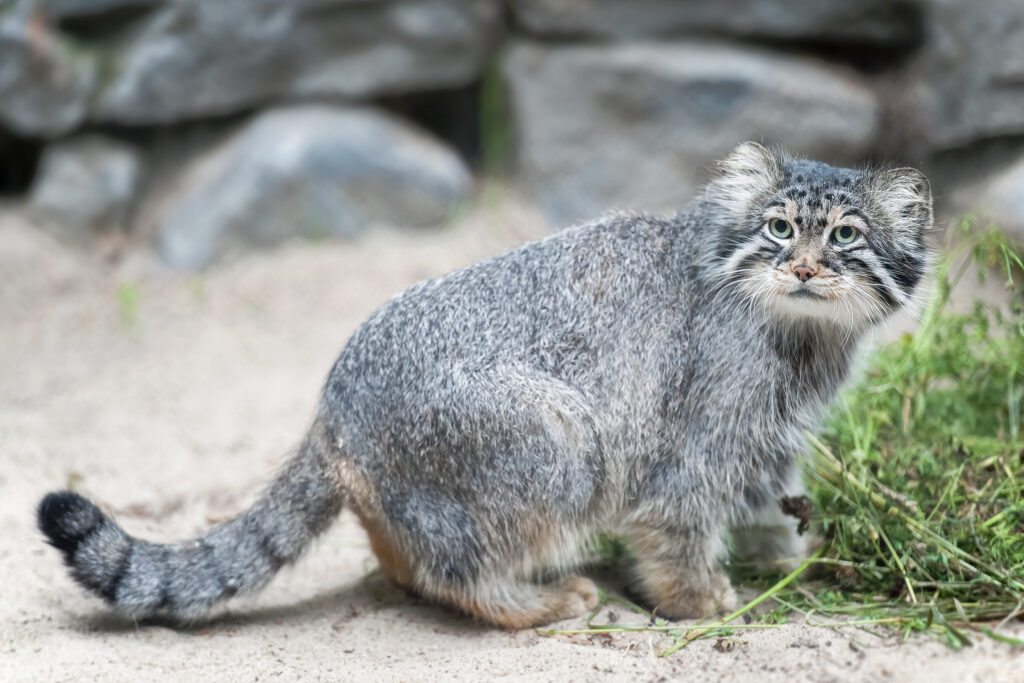
Pallas’s cat, also known as the manul, is a small wildcat species native to the Central Asian highlands, including the Tibetan Plateau and parts of the Himalayas. These cats live at elevations of up to 5,000 meters, where they must endure extremely cold temperatures and low oxygen levels. These are highly adapted to their environment, with thick, fluffy coats that provide insulation and help them blend into the rocky surroundings. Unlike most other cats, they have round pupils, which may help them see better in low-light conditions common in the high-altitude environments they inhabit. They primarily hunt small rodents and birds, relying on their excellent camouflage to ambush prey. Pallas’s cats are rarely seen due to their secretive nature and preference for remote, inaccessible areas. They are considered near-threatened, with habitat loss and hunting being the main threats to their survival. These animals also have the slowest reproductive rate among wildcats, making it difficult for their populations to recover from declines.
Alpine Ibex
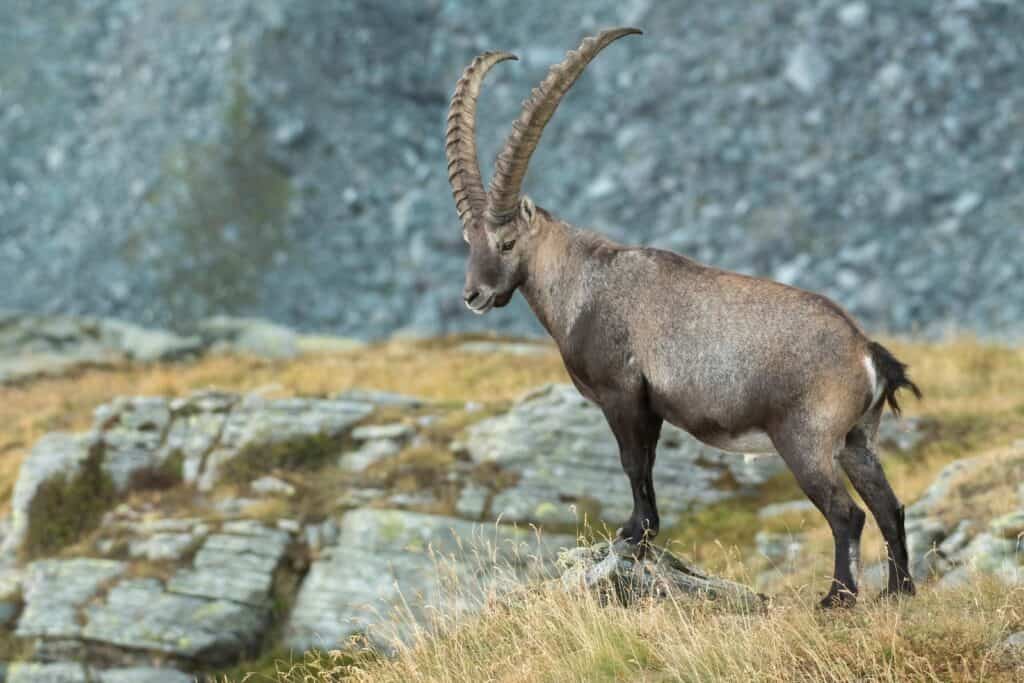
The alpine ibex is a species of wild goat that lives in the high-altitude regions of the European Alps, often at elevations of up to 4,600 meters. These animals are known for their impressive climbing abilities, able to scale steep, rocky cliffs with ease to escape predators and find food. Their large, backward-curving horns, which can grow up to a meter in length, are used in dominance battles between males during the mating season. They are herbivores, feeding on grasses, mosses, and other vegetation that grows in the high-altitude meadows they inhabit. Their thick coats keep them warm in the cold alpine environment, and they shed this coat in the summer to stay cool. Alpine ibex populations were once critically endangered due to overhunting, but conservation efforts have led to a significant recovery. Interestingly, they are known to descend to lower altitudes during the winter, but in the summer months, they prefer the safety and food supply found at higher elevations.
Himalayan Musk Deer
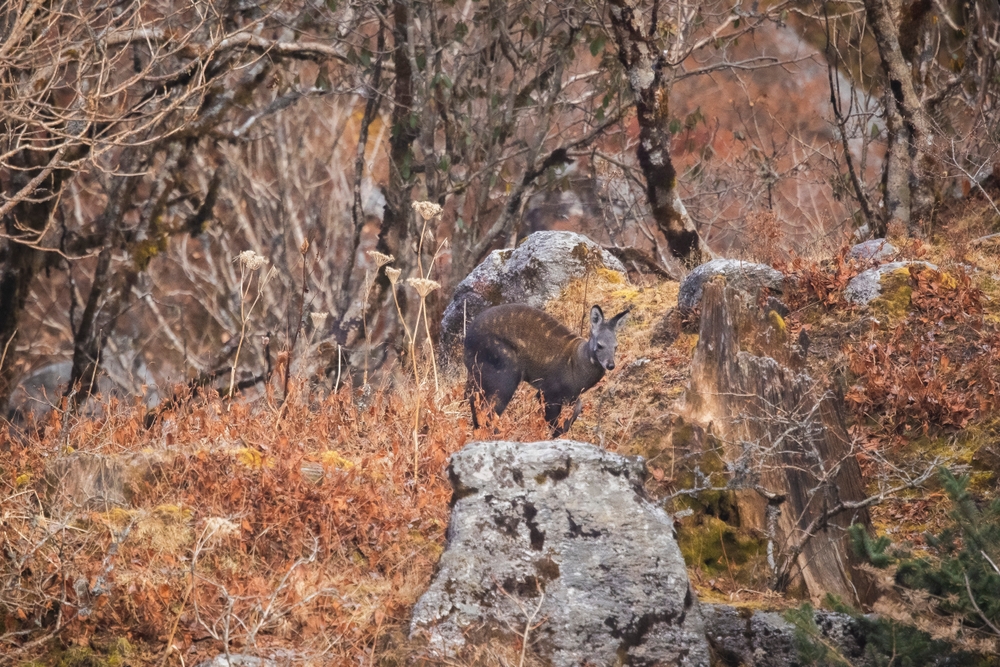
The Himalayan musk deer is a small, nocturnal species that inhabits the forested slopes and alpine scrub of the Himalayas, typically between 2,500 and 5,000 meters. These deer are best known for the musk gland found in males, which produces a highly valuable scent used in traditional medicines and perfumes. Their small size and large, sharp canines, which protrude from the mouth like fangs, give them a unique appearance. They are highly adapted to life in the high mountains, with their powerful hind legs enabling them to leap across rocky terrain with ease. They are herbivores, feeding on grasses, leaves, and lichens that grow in their cold, mountainous habitat. Despite their nocturnal habits, musk deer are surprisingly active and agile, able to evade predators through their exceptional climbing abilities. The species is endangered, largely due to illegal poaching for its musk, which is often more valuable than gold.
Himalayan Serow
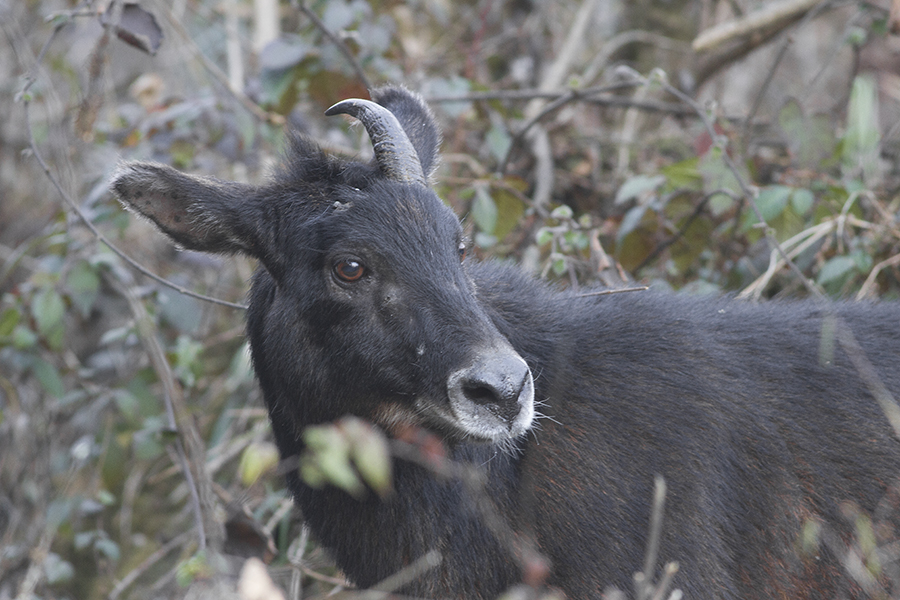
The Himalayan serow is an uncommon, goat-like mammal found in the steep, forested slopes of the Himalayan region. These animals inhabit elevations ranging from 2,000 to 4,000 meters, where they live in dense vegetation that provides cover from predators. They are solitary creatures and are known for their agility, able to navigate rocky terrain with ease thanks to their strong legs and sharp hooves. Their thick, bristly coat helps protect them from the cold, wet conditions of their mountainous habitat. Serows are herbivores, feeding on grasses, leaves, and shrubs that grow in the dense underbrush of the forest. Although not currently endangered, their populations are threatened by habitat destruction and poaching. Interestingly, serows are crepuscular, meaning they are most active during the early morning and late afternoon, avoiding the hottest part of the day.
Yunnan Snub-Nosed Monkey
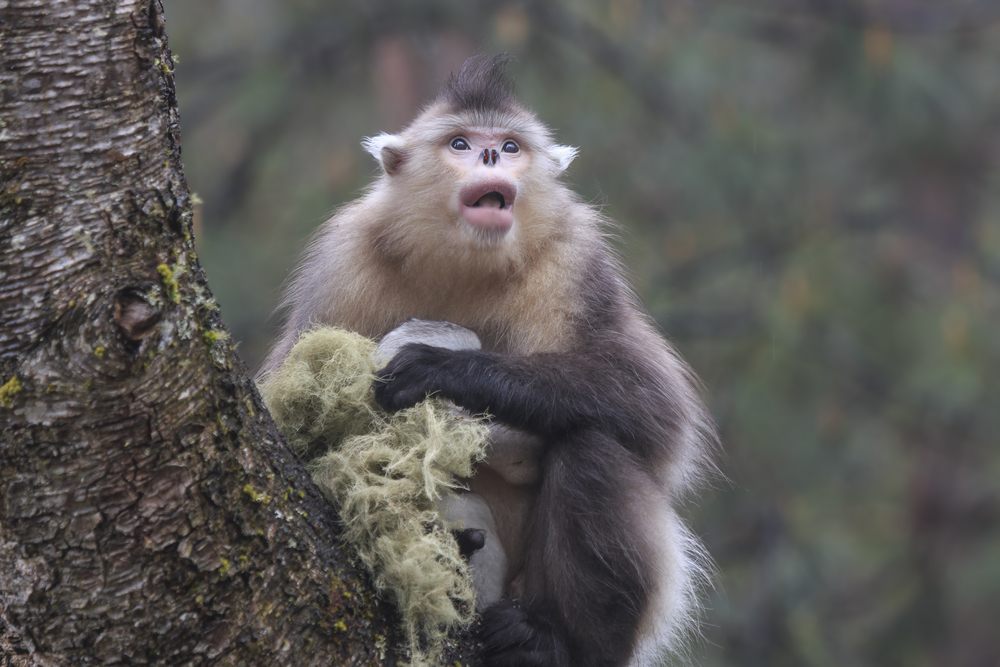
The Yunnan snub-nosed monkey is one of the rarest primates in the world, found only in the high-altitude forests of China’s Yunnan Province. These monkeys inhabit elevations of up to 4,500 meters, where the air is thin and the temperatures can be freezing for much of the year. Their thick, long fur provides insulation against the cold, and their short, upturned noses help prevent frostbite in frigid conditions. These monkeys live in large groups, often consisting of several hundred individuals, and they rely on the social bonds within these groups for protection and survival. They primarily feed on lichens, which grow abundantly on the trees in their forested habitat, but they also eat leaves, fruits, and seeds when available. The species is critically endangered, with fewer than 3,000 individuals remaining in the wild, due to habitat loss and fragmentation. The Yunnan snub-nosed monkey is culturally significant in China, and it has become a symbol of wildlife conservation efforts in the region.
This article originally appeared on Rarest.org.
More from Rarest.org
15 Prestigious Fountain Pen Brands Collectors Cherish

Fountain pens have long been treasured not only for their writing quality but also for their elegance and craftsmanship. Collectors around the world cherish certain brands that stand out for their attention to detail, unique designs, and high-quality materials. Read More.
15 Lavish Resorts Favored by the World’s Richest

For the world’s wealthiest, luxury resorts offer more than just a place to stay—they provide an unparalleled escape where every need is anticipated, and privacy is guaranteed. From private islands to sprawling desert retreats, these exclusive destinations cater to those who seek indulgence in the world’s most breathtaking locations. Read More.
13 Forgotten Anime Series with Small but Loyal Fanbases

Many anime series fade into obscurity over time, overshadowed by bigger titles and new releases. However, some of these hidden gems still manage to capture the hearts of dedicated fans, who remain loyal to the stories and characters long after they’ve left the spotlight. Read More.
